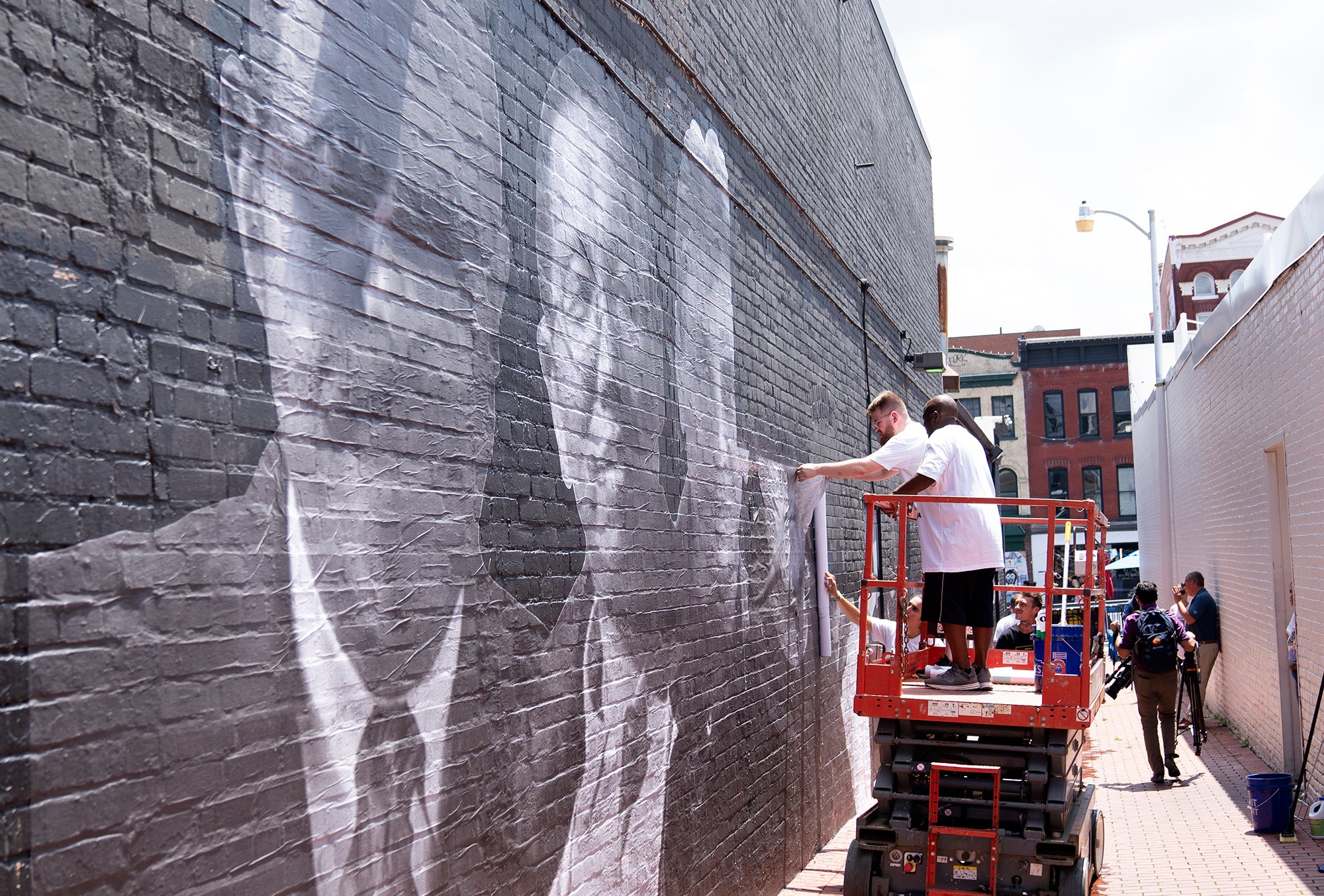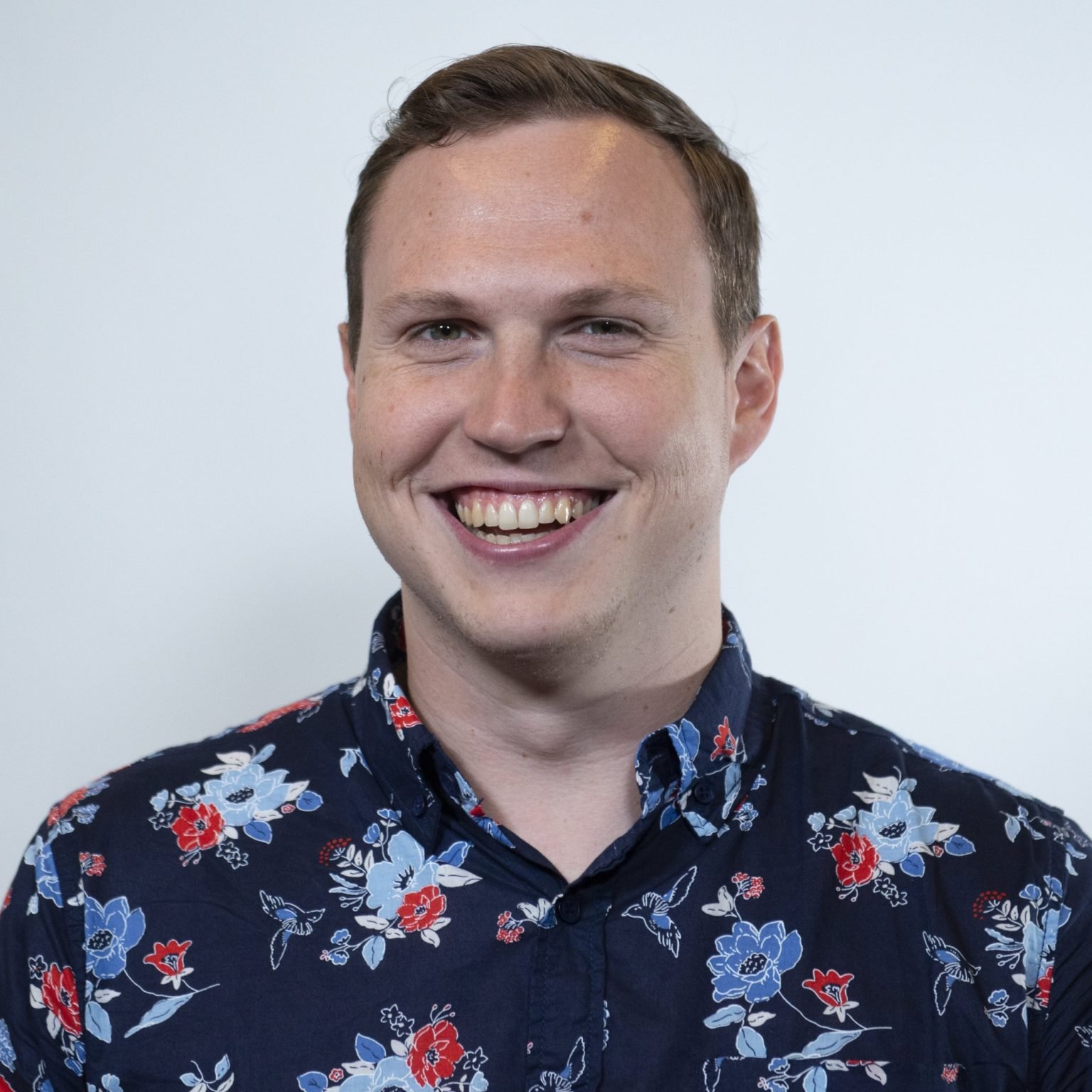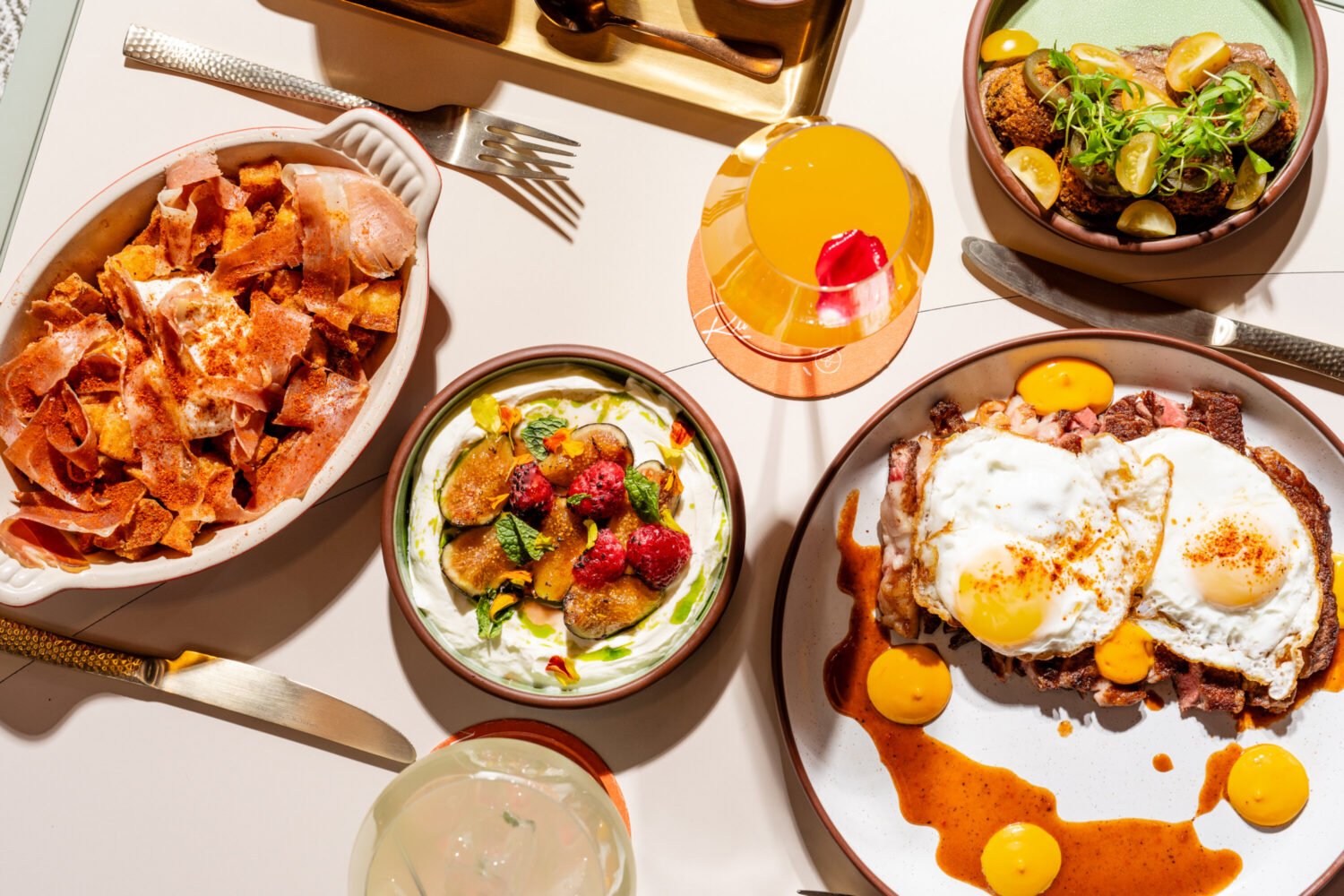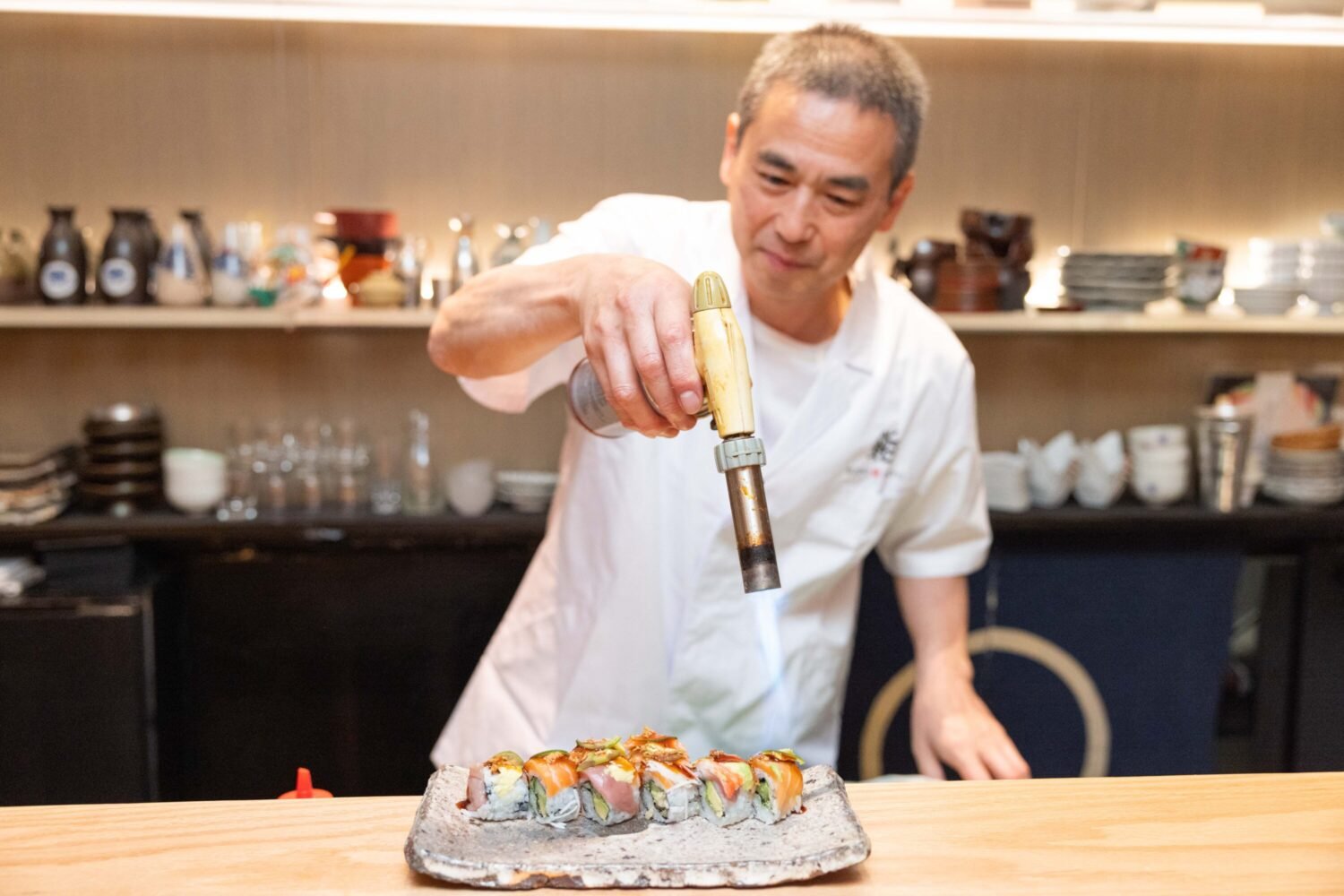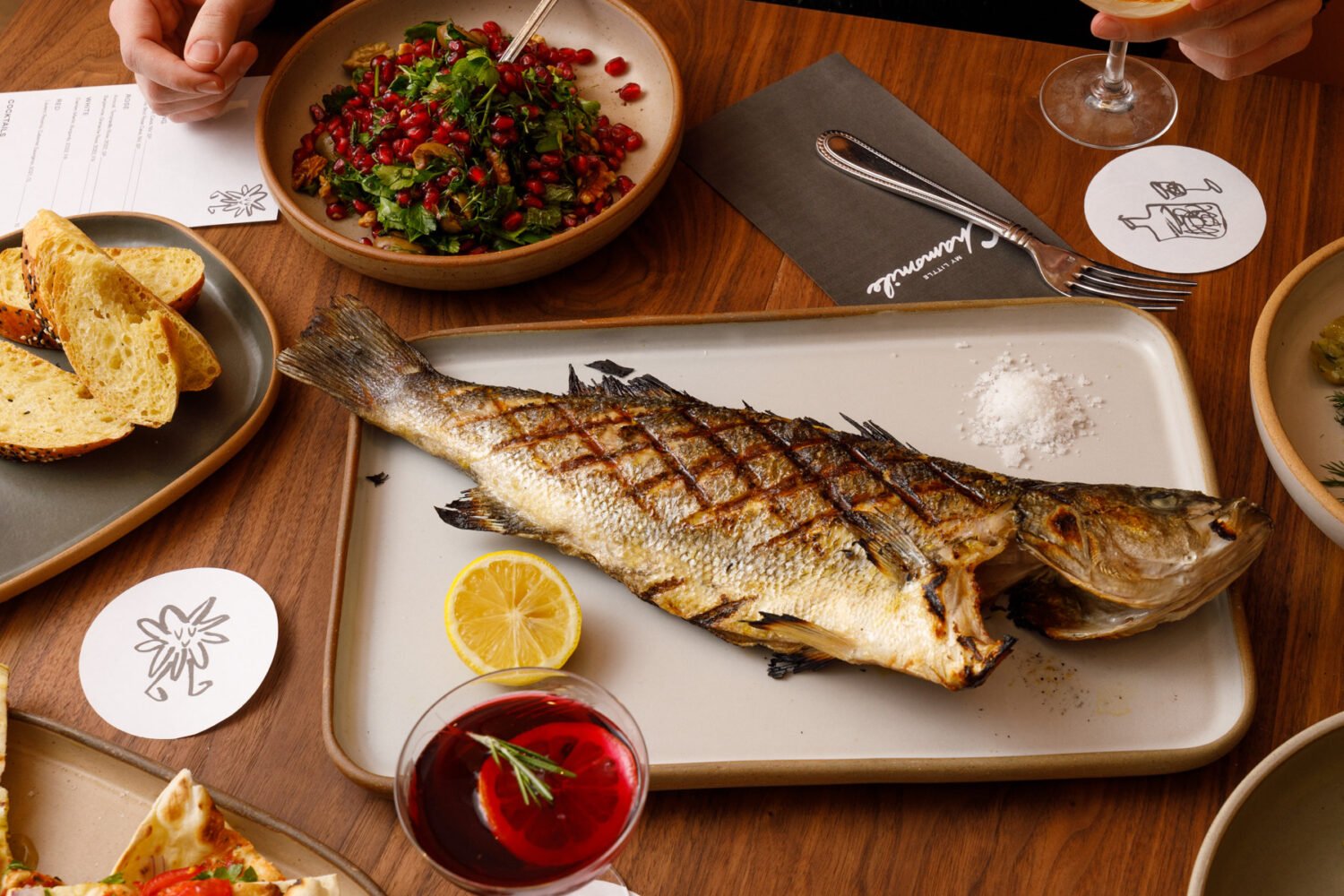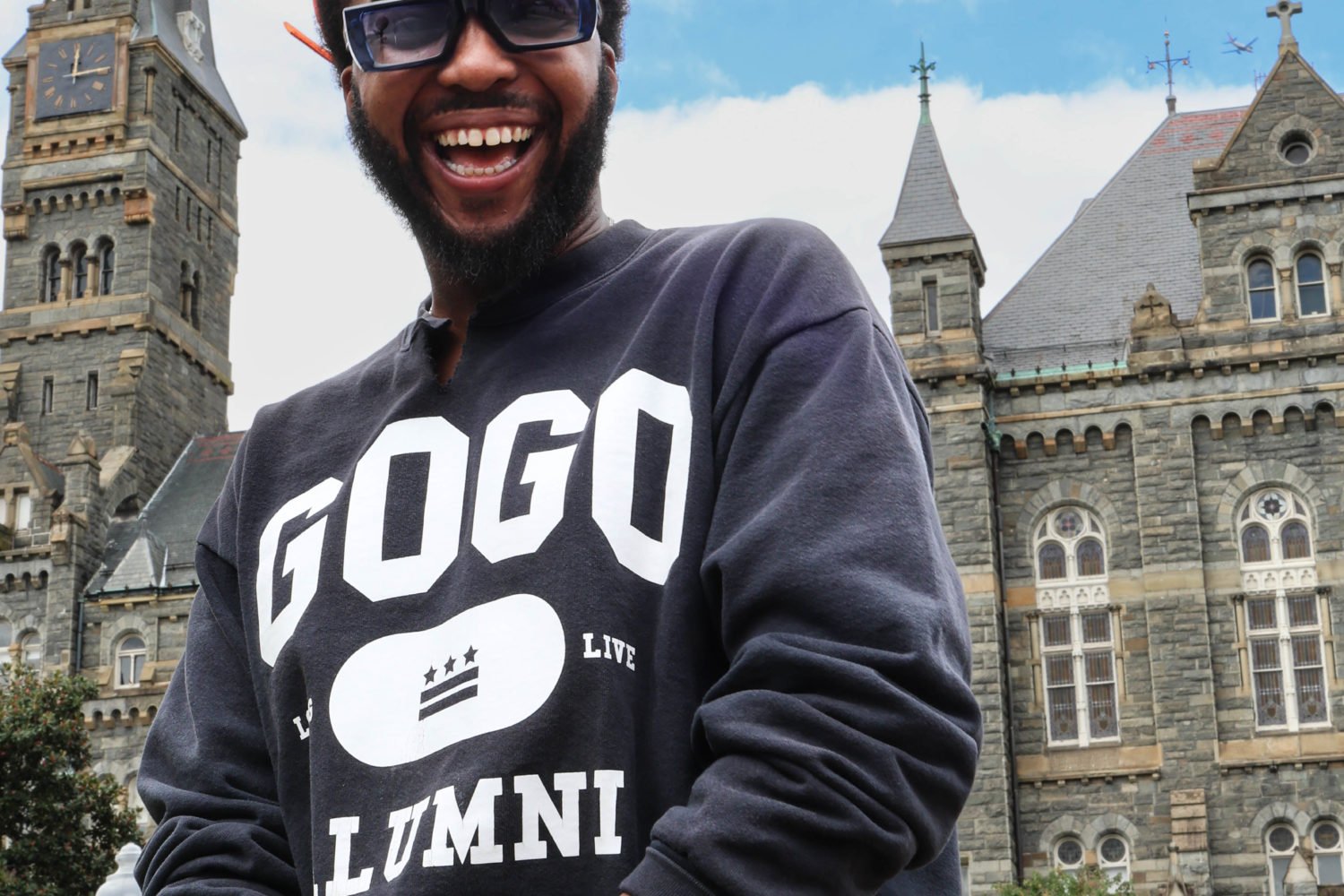People gathered in Georgetown Tuesday morning to paste photos of Americans wrongfully detained overseas in an effort to bring awareness to their cases. When the mural is done, photos of 18 people, including the faces of Brittney Griner, Paul Rusesabagina, and Paul Whelan, will be compiled in a 15-foot tall artwork on M Street, Northwest, that spans the length of the alley between Levain Bakery and the former home of Rí Rá Irish pub. The collaborative piece will take approximately eight hours to build before it is revealed in full on Wednesday morning.
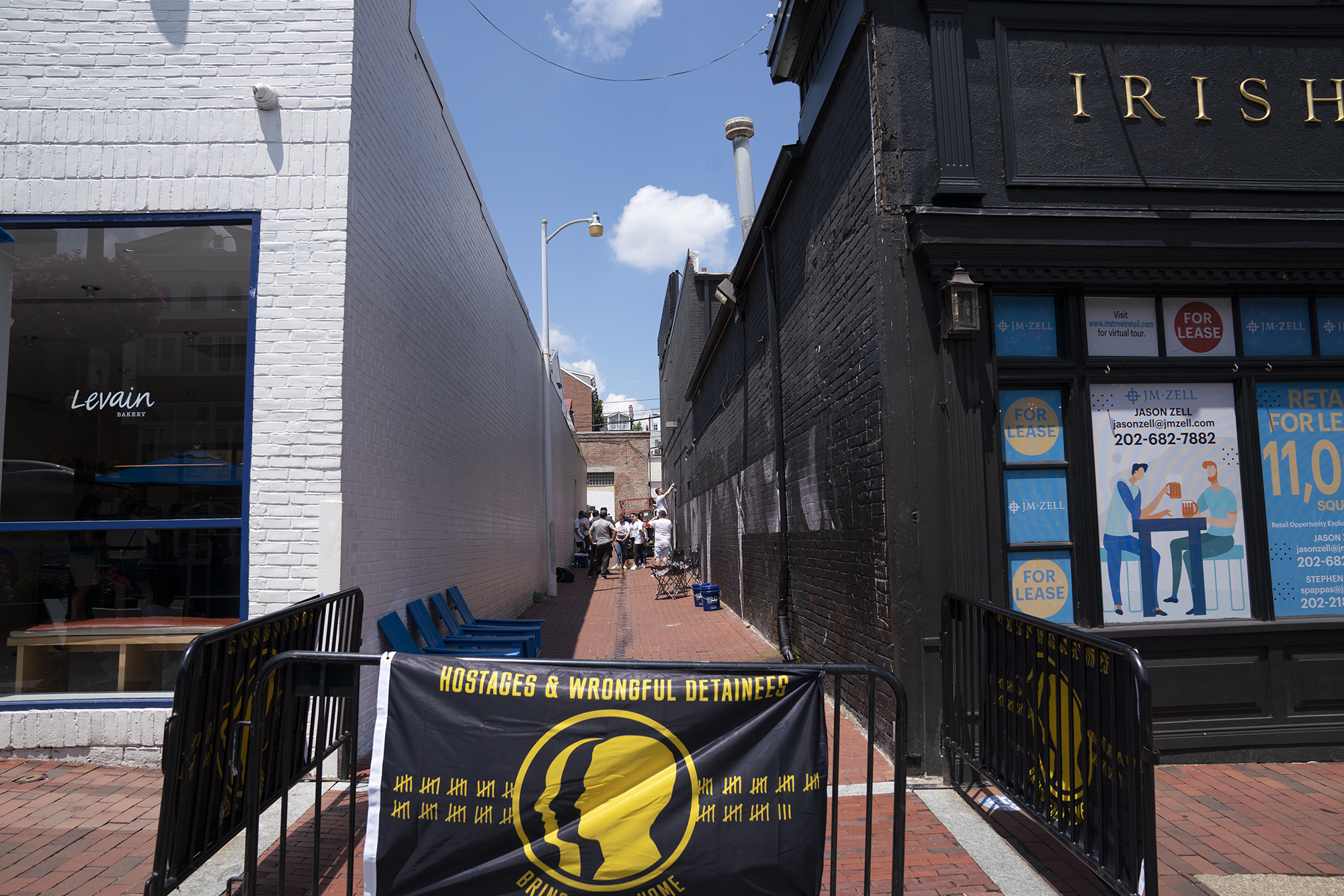
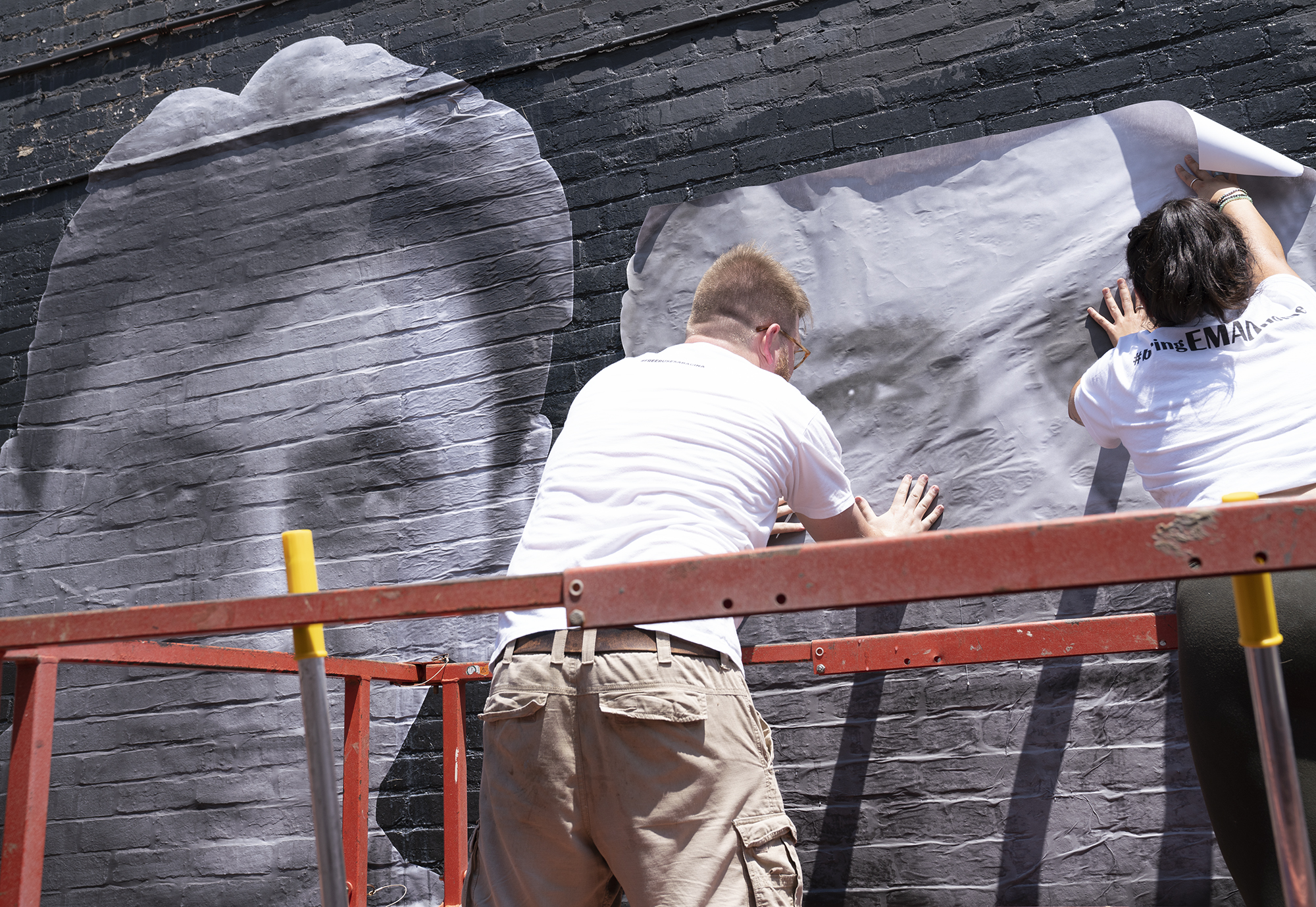
All 18 photos–some which are the last photos families have–have been provided by loved ones in the Bring Our Families Home campaign, which is dedicated to bringing home the 64 known American hostages from overseas.
“It’s a campaign of families that have basically found each other and come together to help one another, get through this, and also to advocate for the release of our loved ones, and advocate the administration to not forget them and to bring them home,” says Neda Sharghi, whose brother Emad Shargi will appear on the mural while being wrongfully detained in Iran for more than four years.
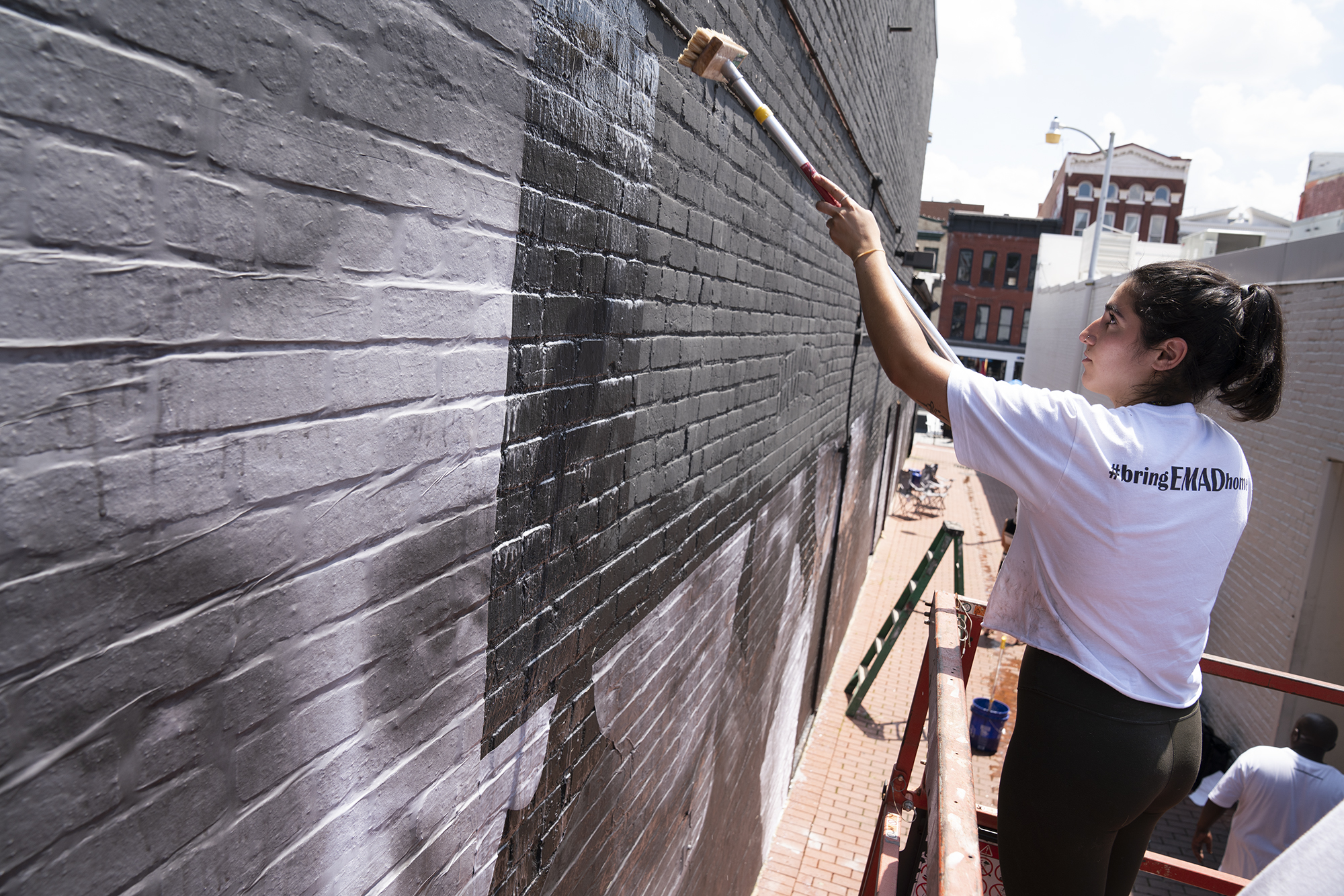
Neda says it’s particularly meaningful for this mural to be in Georgetown and in DC, Emad’s home, where she has such wonderful memories of going to restaurants and movies with him.“It really makes me feel proud to be a Washingtonian.”
Iowan artist Isaac Campbell designed the black and white mural and said he’s acting as a team leader, aiding detainees’ family members and passersby alike as they cut and paste the photos to the wall using flour, water and sugar to create a non-toxic, biodegradable glue.
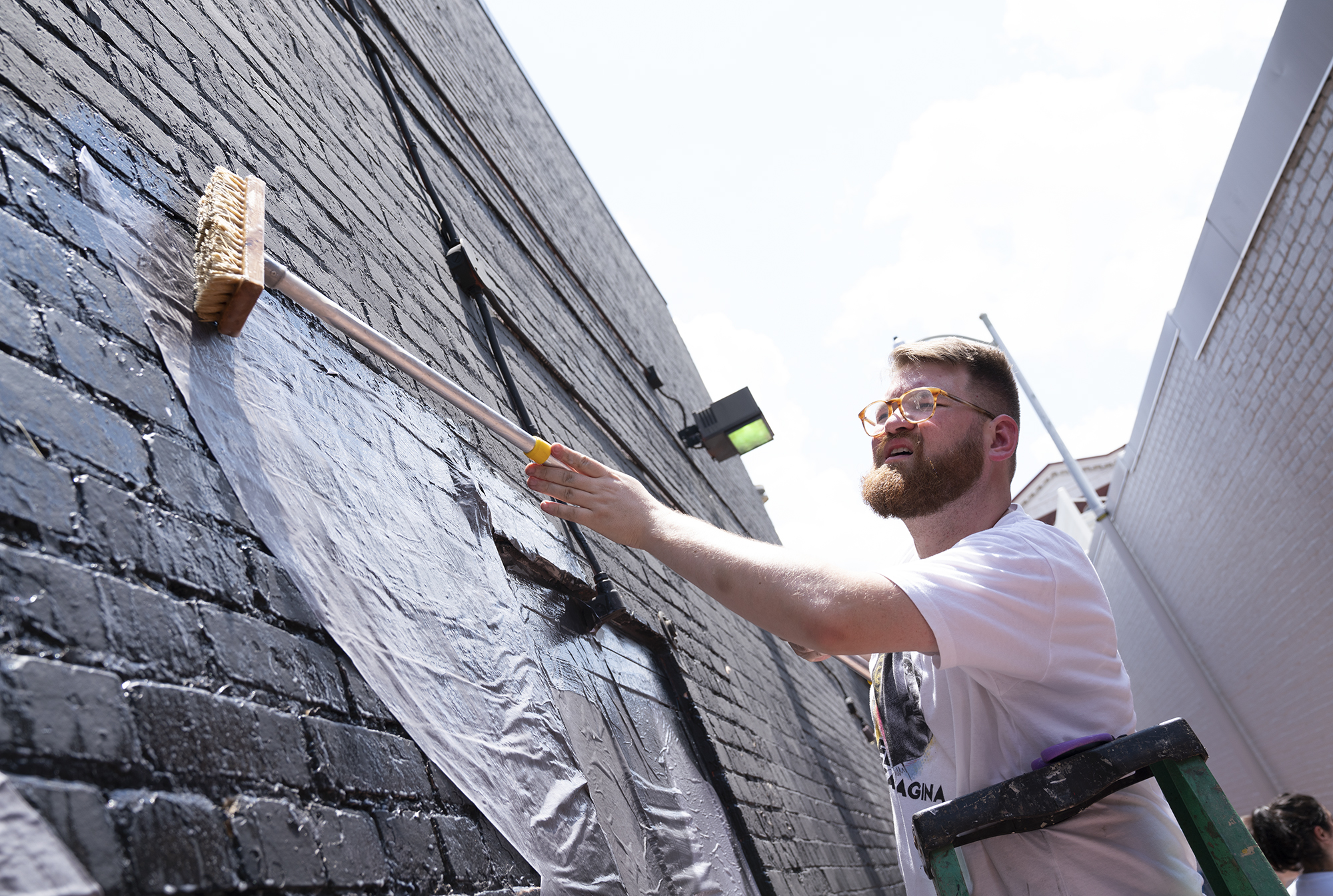
“Wheat paste has long been used as traditionally a form of protest, of people getting together to make sure their voices are heard in public settings,” Campbell says. “And one of the ways that it’s been so popular is it’s a very cheap and effective method of getting a big message out in places where people don’t expect them.”
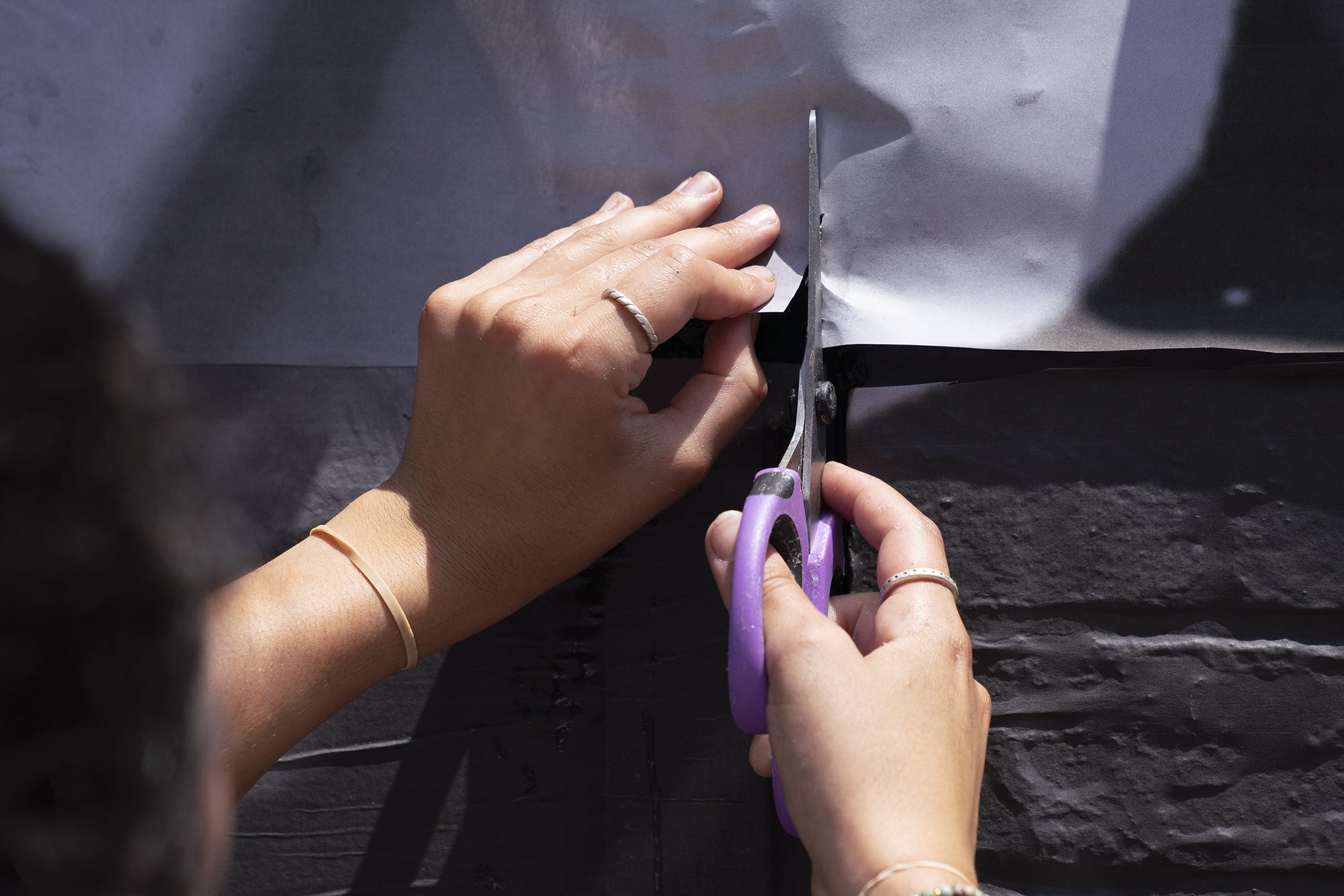
Since it’s made of paper and will be subjected to the elements, the mural will start to deteriorate almost as soon as its finished—meaning time itself is the most crucial element of the piece.
“Time is something that’s really always on our mind. I constantly keep a tally of how long my brother has been gone, when the last birthday he was able to attend was. So the fact that time is so much a part of the mural is remarkable,” Sharghi says. “And we hope that our loved ones will come home before this mural fades away.”
Campbell says the mural could last anywhere from a few days or three to six months to over a year, depending on how well the photo compilation withstands the human and natural elements. The photos themselves are an indicator of time as well; crisp photos from last year “uncomfortably juxtaposed” with photos from ten years ago.
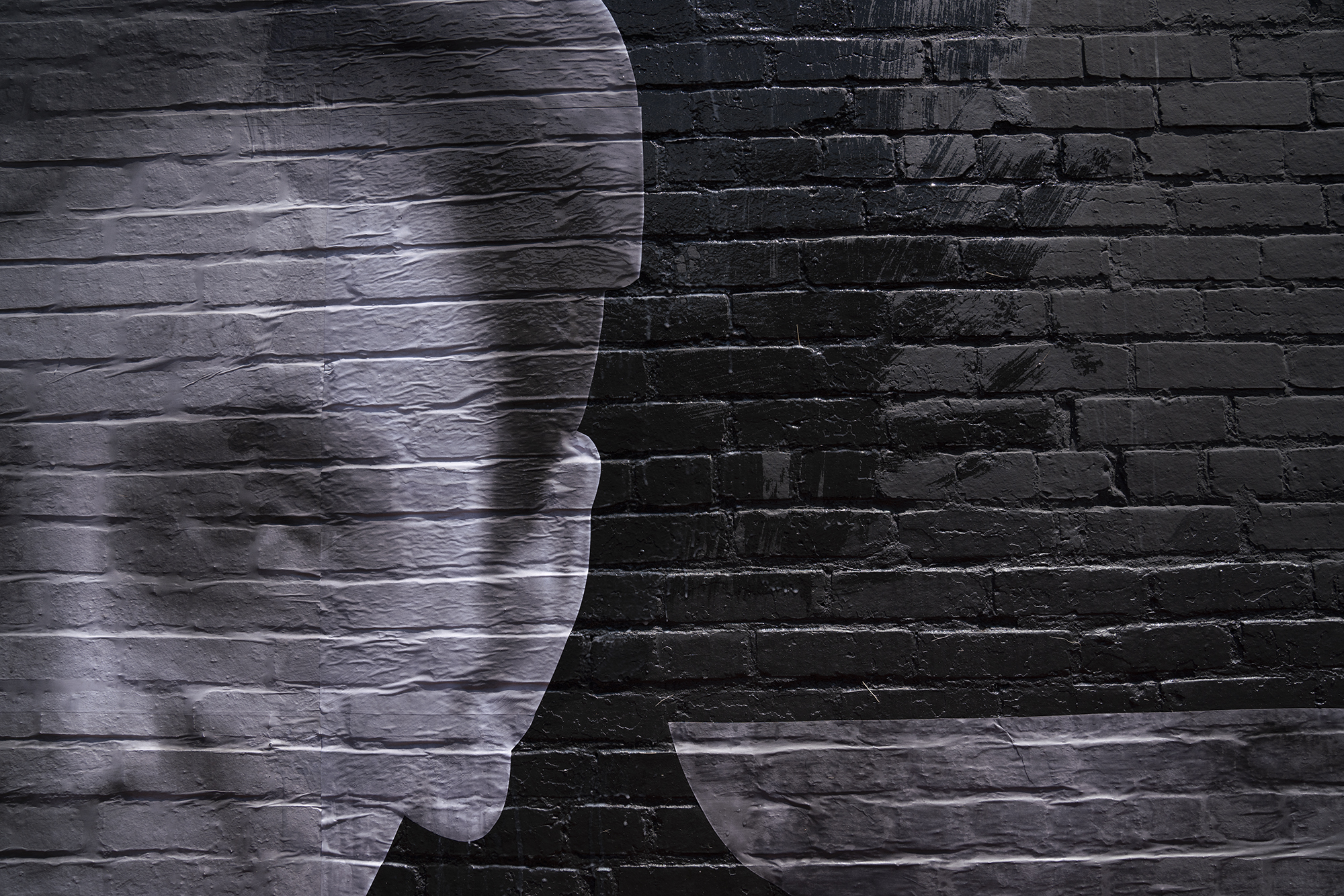
“You’re going to see images that are blurry. They’re not blurry because it’s a bad photo, they’re blurry because that photo is so old.” Campbell says. “I think that’s going to be really important for people to understand is that the newest photo we have of some of the people are from 2012, back when cell phones and cameras were taking such, you know, minuscule photos from what we have today, but that’s all that family’s got.”
The 2017 photo Emad Shargi’s family chose to use shows Emad sitting in a garden in a blue-color shirt, smiling from ear to ear.
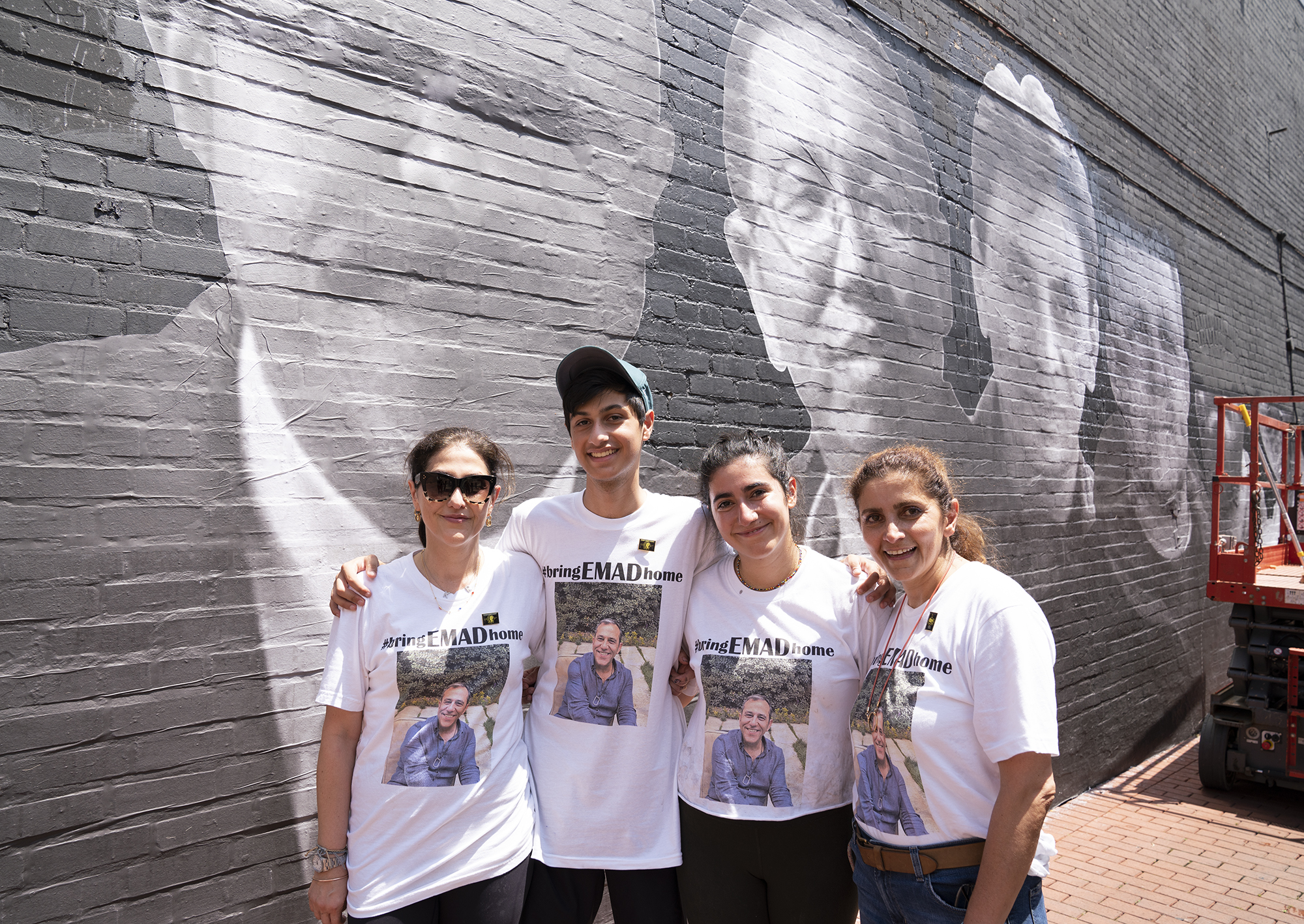
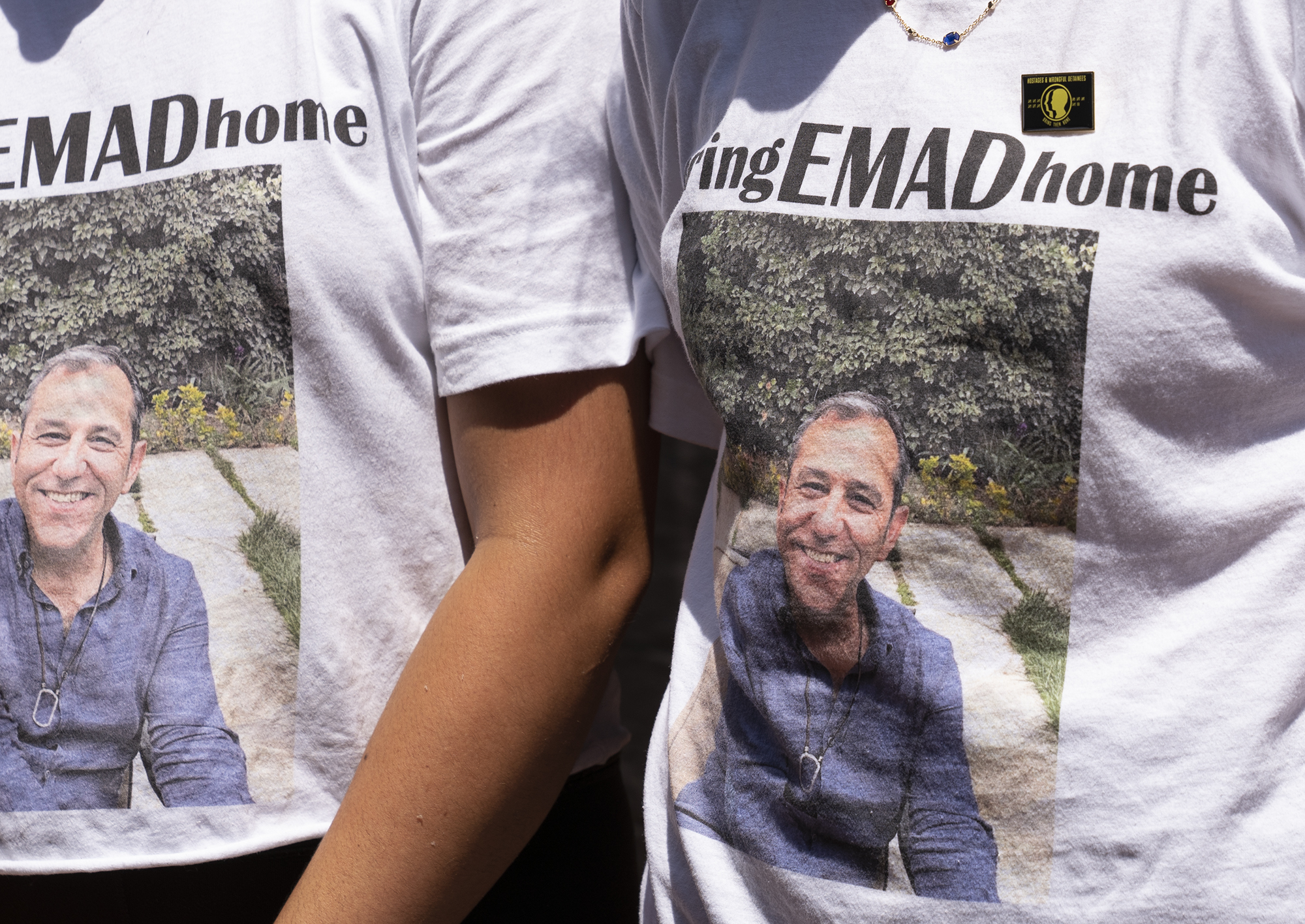
“He’s quite relaxed, and he’s got the most beautiful smile on his face. And it’s a very warm picture, very inviting, the smile is incredibly inviting. And we’ve used this picture in the past and chose to use it in this mural because it’s one way that we can show that my brother Emad is a lovely, kind, warm-hearted American and to sort of give people an insight into his personality and into his character. You look at him and you say, ‘I would like to sit with him and get to know him. I would like to talk to him,’ and you know, it’s heartbreaking to know that he is somewhere far away, alone from his family.”
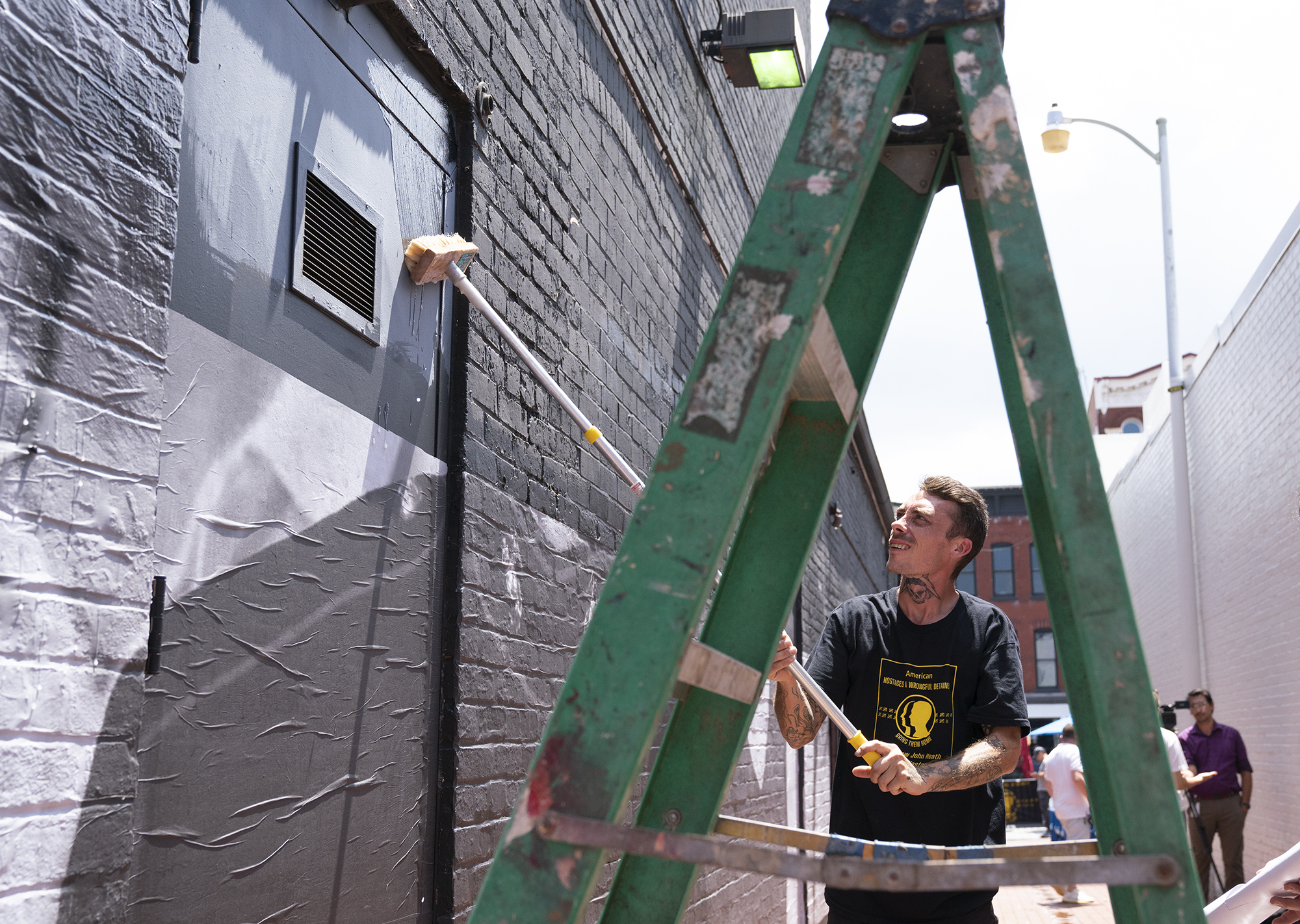
Just as it takes a community to put the mural together, it is a community in which the various detainees appear–isolated in their own corners of the world, but together in community–together in an alley on M Street. They are brothers, sisters, fathers, mothers, US service members, businesspeople, engineers, and environmentalists. One is even a professional basketball star and Olympic gold medalist. At the end of the day, they are all Americans detained overseas.
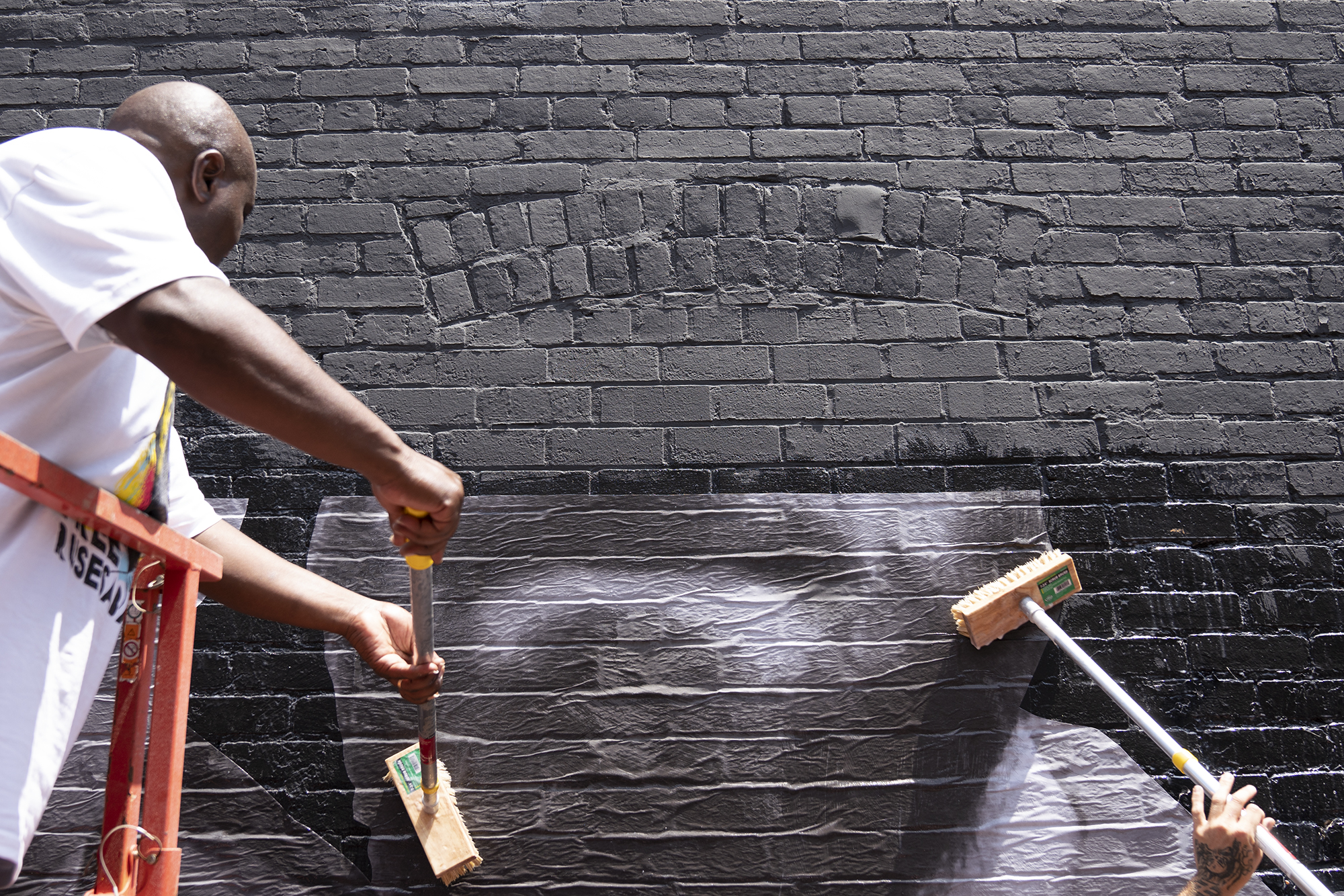
“Having someone like Cherelle Griner go out publicly and speak about her wife, because Brittney is so high-profile, is actually incredibly comforting,” Sharghi says. “The word that comes to mind, being a family member of someone who’s been detained abroad, is just loneliness and isolation. [The Griner team] has been an important member of our campaign. The reality is, they will probably have more access to media than the rest of us. And so the fact that they’re including us in their campaign, to bring Brittney home by highlighting the issue of hostage-taking and our loved ones, is really valuable and appreciated by all of us.”
Visitors to the Georgetown mural are invited to scan a QR code to learn more about each of the detainees that appear in the mural.
“We need we really need to put pressure on on all people with any tools, whether that’s wheat-pasting, or whether that’s using your your own personal platforms on social media to help apply pressure or if you’re in any stage of government, and you can provide support and begin to help bring these people home,” Campbell says.
The public is invited to come out for the mural’s unveiling and press conference at 11:30 AM Wednesday morning. Those who cannot attend in person can watch a livestream on YouTube.

